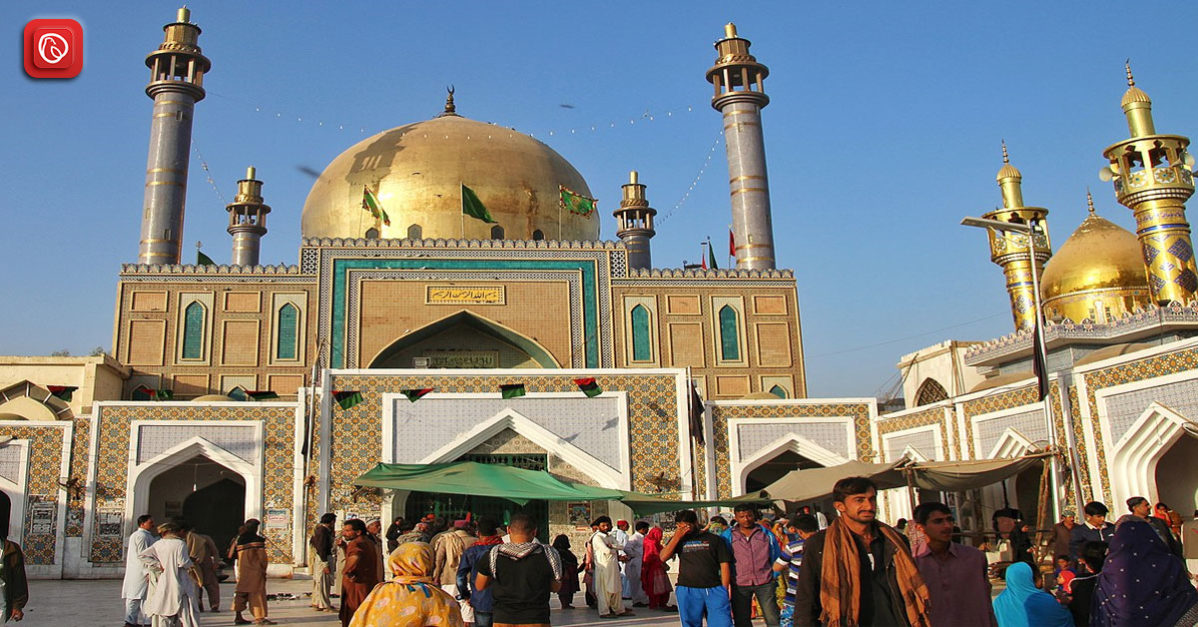The Pakistani province of Sindh contains the historic and aristocratic city of Sehwan Sharif, located in the Jamshoro District. The city is located, on the west bank of the Indus River, approximately 130 kilometres northwest of Hyderabad, is critical because of its Sufi connection. One of Pakistan’s most revered Sufi shrines, the Shrine of Lal Shahbaz Qalandar, is the crown jewel of Sehwan Sharif. Sehwan Sharif is a well-known pilgrimage site because it is home to this shrine devoted to the Sufi saint Lal Shahbaz Qalandar, who lived in the 13th century and draws thousands of pilgrims and tourists each year. Graana. Com provides you with a thorough tour of the city of Sehwan in this blog.
Location
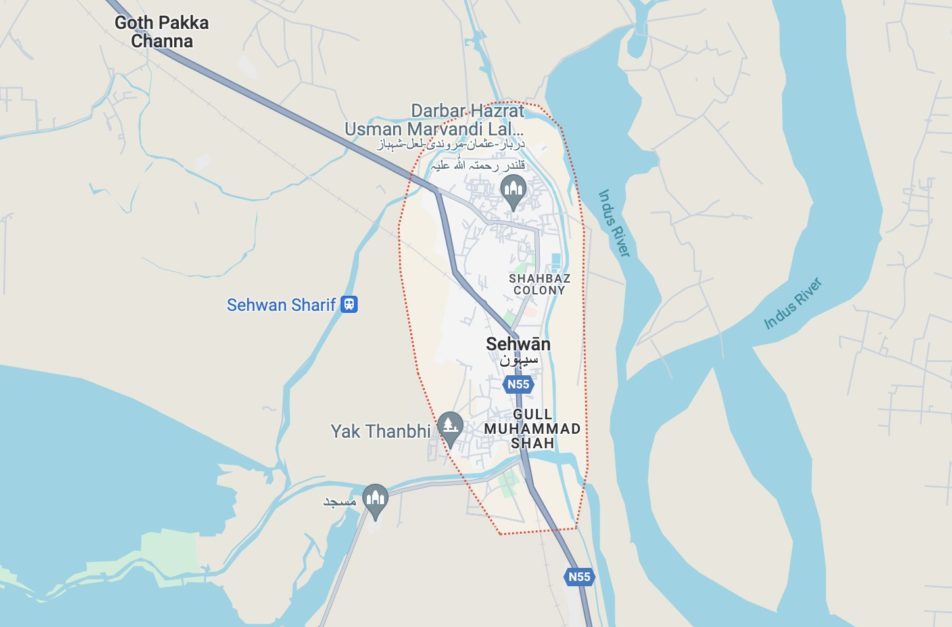
Sehwan Sharif, popularly referred to as Sehwan, has a profound spiritual importance and a long history. This city, about 80 miles (130 km) northwest of Hyderabad, is situated on the west bank of the Indus River in the Jamshoro District of Sindh province, Pakistan.
Here’s a closer look at Sehwan Sharif’s location:
- Province: Sindh
- District: Jamshoro (Previously Dadu District)
- Direction: Northwest of Hyderabad
- Distance: 80 miles (130 kilometers)
- Latitude: 26.419313
- Longitude: 67.859375
Sehwan Sharif is currently a part of the Jamshoro District, even if the data presented shows the Matiyari District. It is famous for its location of the hallowed Shrine of Lal Shahbaz Qalandar, a 13th-century Sufi saint. This shrine attracts a multitude of pilgrims and visitors each year, reinforcing its standing as a prominent pilgrimage site.
How to Reach?
Even though Sehwan Sharif lacks a regularly scheduled airport, there are still ways to get to this ancient city. Below is a summary of your choices:
Special Flights During Urs
During the Urs festival, which honours Lal Shahbaz Qalandar’s death anniversary, Sehwan Sharif comes to life. For the three-day celebration, Pakistan International Airlines runs extra daily flights between Karachi and Sehwan Sharif.
Train Options
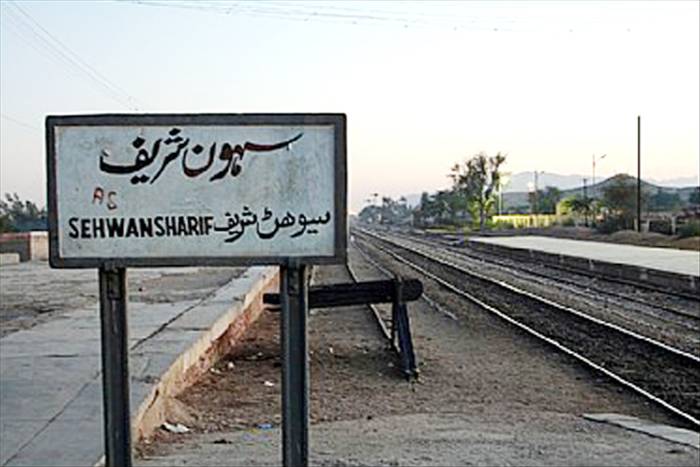
Sehwan has a single train station where two trains arrive and depart twice a day:
- Bolan Mail: This train provides affordable, air-conditioned compartments for travel between Karachi and Quetta.
- Karachi to Sehwan: Departs Karachi daily at 6 PM, arriving at midnight.
- Quetta to Sehwan: Departs daily at 11 AM, arriving at 1 AM.
- Costs: Air-conditioned: Rs 800 (Karachi), double for a berth; Economy class: Rs 350 (Karachi), Rs 800 (Peshawar), Rs 600 (Quetta).
Khushal Khan Khattak Express
This train from Karachi to Peshawar only runs in economy class.
- From Karachi: Daily departure from Karachi at 7 PM, arrival at 2 AM.
- from Peshawar: Daily departure from Peshawar at 4 PM, arrival about 9 PM.
- Cost: Rs 350 in Karachi for economy class, Rs 800 in Peshawar.
Convenient Buses
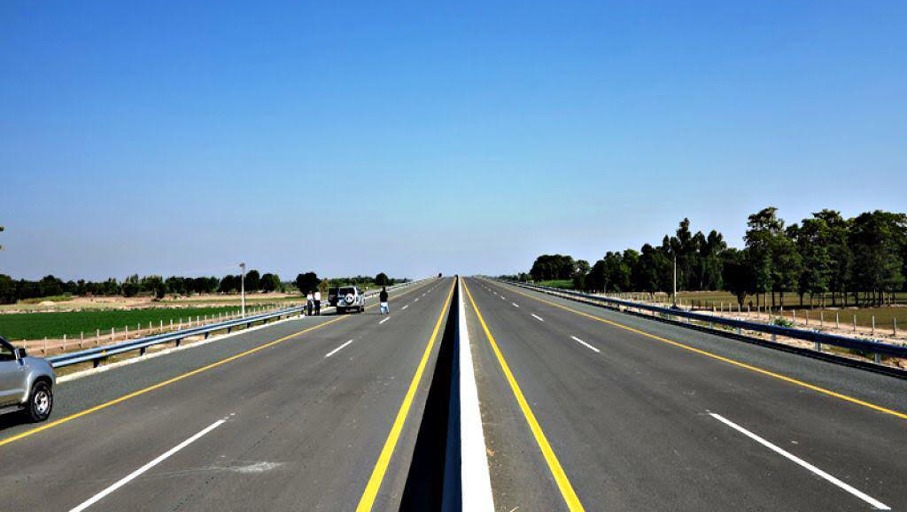
- The city sits conveniently on the National Highway N-55, also known as the Indus Highway. This major highway stretches from Karachi to Peshawar, making it easy to find buses travelling to the city from most cities along the route.
- Air-conditioned and non-air-conditioned buses and vans from major cities in Sindh operate frequently throughout the day. You can find them at bus terminals or even hail them directly on the highway.
Tourism
In addition to being a significant historical city, Sehwan Sharif, usually called Sehwan, is a well-known spiritual hub in Pakistan. Consider it, along with other hallowed temples such as one of the nation’s priceless jewels.
This spiritual city is located approximately 80 miles (130 km) northwest of Hyderabad, in the Jamshoro District of Sindh province. It is situated on the west bank of the Indus River.
The city’s renown originates from housing the hallowed Shrine of 13th-century Sufi saint Lal Shahbaz Qalandar. Many pilgrims and tourists visit this shrine annually, confirming Sehwan Sharif’s standing as an essential spiritual hub.
The city was formerly a part of the Dadu District but was later connected to the newly formed Jamshoro District.
Shrine of Lal Shehbaz Qalandar
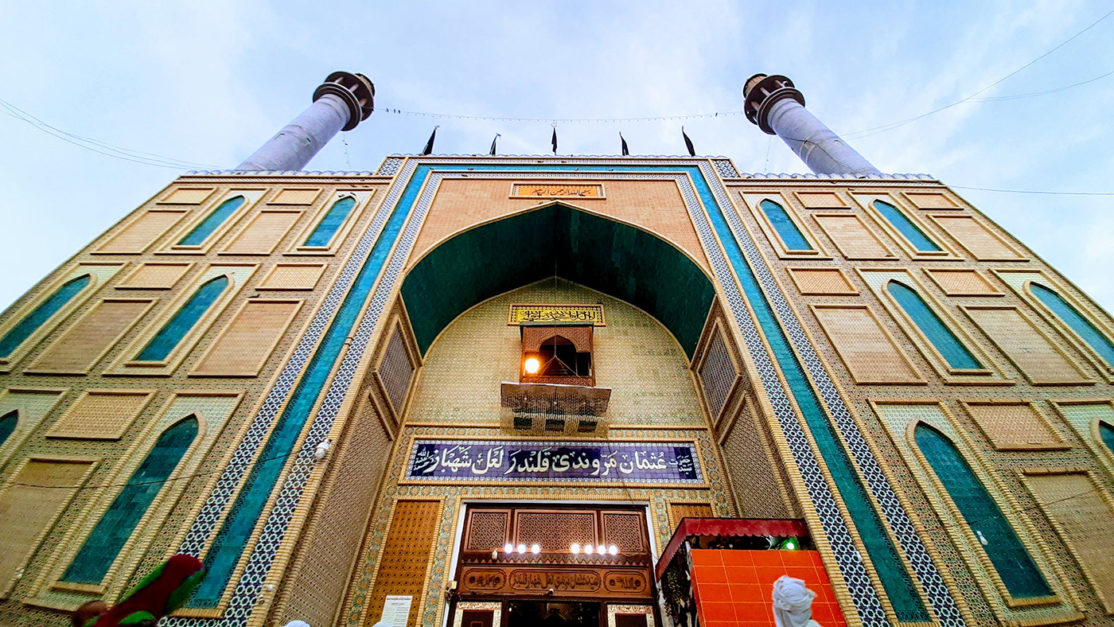
For Sufis and saint enthusiasts, the Shrine of Lal Shahbaz Qalandar at Sehwan Sharif, Pakistan, is an important place of pilgrimage. The temple dates back to the fourteenth century and welcomes hundreds of thousands of tourists annually.
A Focal Point During Urs
The biggest assembly occurs during the Urs celebrations, which take place on the 18th of Shaban in the Islamic lunar calendar. During these three days, more than 500,000 pilgrims from Pakistan converge on Sehwan Sharif, turning it into a bustling metropolis.
Dhamal: A Sufi Dance Tradition
A fascinating feature of the Urs is the traditional Sufi dance known as the dhamal. Participants spiral and swing rhythmically to the beat of drums, entering a spiritual trance.
Beyond the Shrine
There is more to Sehwan Sharif than merely the shrine. A spiritual descendant of Lal Shahbaz Qalandar, the adjacent Shrine of Murshid Nadir Ali Shah upholds the hospitality tradition by feeding guests for free. The city is close to several historical locations, including the “inverted city” and Manchar Lake, Pakistan’s largest freshwater lake, which present options for additional study.
Economy
The city’s economy thrives on a diversified combination of traditional and contemporary income sources. Below is a summary of its main economic drivers:
- Agriculture: Agriculture is the cornerstone of Sehwan Sharif’s economy. To ensure a consistent flow of income, farmers grow a wide range of products, including wheat, rice, cotton, sugarcane, and vegetables.
- Livestock farming: Cattle, goats, and fowl make a substantial contribution through the sale of dairy products, meat, and poultry.
- Devotees: Travellers and pilgrims are drawn to Sehwan Sharif because it is the location of the holy Lal Shahbaz Qalandar shrine. Their expenditures at neighbourhood shops, offerings, and donations powerfully stimulate the local economy.
- Trade and Commerce: A variety of commodities are traded in this busy marketplace. Local marketplaces and stores add to the total amount of economic activity.
- Handicrafts: Serving residents and visitors, local artisans produce and market traditional Sindhi handicrafts, such as jewellery, embroidered textiles, and pottery.
- Transportation: Sehwan Sharif’s unique location as a transportation hub stimulates trade and benefits enterprises associated with transportation.
- Education and Services: Schools, colleges, and service-oriented enterprises, such as healthcare facilities, offer employment opportunities and respond to the community’s needs.
- Government Employment: Government positions in administrative offices, hospitals, and schools provide a sizable source of revenue for the local populace.
Sehwan’s Origins: A Tapestry of Theories
Sehwan Sharif has a rich history, albeit its beginnings are lost in the mists of time. Here is a peek at some of the theories that surround its origins and name:
- Sewi Aryan Legacy: According to historian Molai Sheedai, Sehwan was constructed by the Sewi Aryans, which is why Sewistan got its name.
- Sanskrit Connection: According to an alternative version, the name Sindomana—a term that appears in Greek literature—is where it began. This Sanskrit term means “the possessor of Sindh,” and it could develop into Sehwan.
- Capital of King Sambos: It is also thought that Sindomana served as the seat of government for King Sambos, who lost to Alexander the Great in 326 BC. To the north of the city lies a sizable historical site known as Kafir Qila (fort of the pagans), which may support this notion.
- The fall of Sehwan Sharif to Muhammad bin Qasim in 711 AD causes a dramatic change in the balance of power in the area.
- Post-Mughal Era: After the Mughals, the Kalhoras and Talpurs controlled Sehwan Sharif alternately, adding to the city’s long history of previous kings.
Sehwan Fort: A Historical Enigma
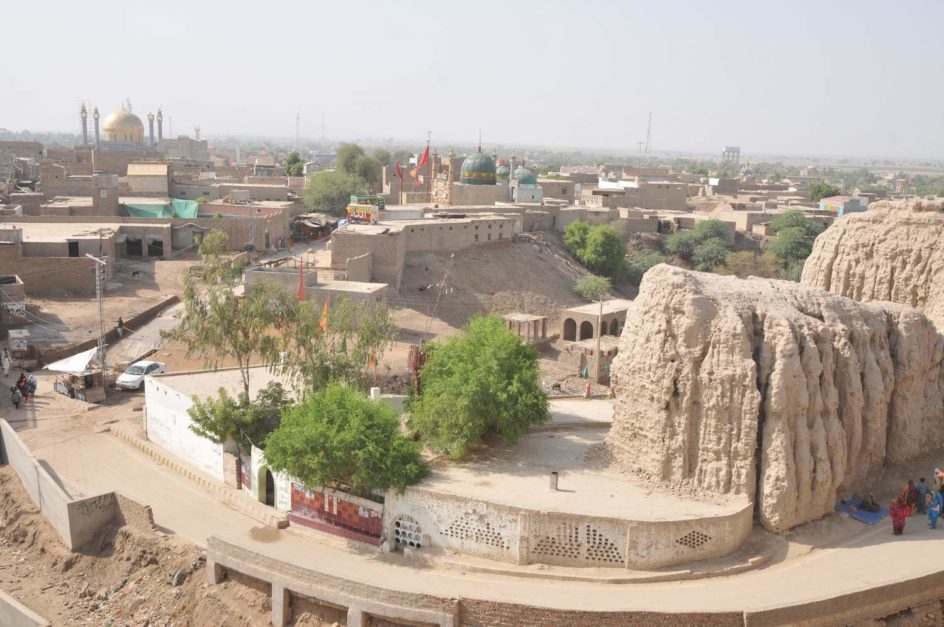
Located in Sehwan, Sindh, Pakistan, Sehwan Fort, also called Kafir Qila (Fort of the Infidels), is a formidable structure. This massive, enigmatic building has spurred decades of discussion on its origins.
An Alexander-Related Legacy
According to local legend, Alexander the Great himself constructed the fort, which is also known as “Alexander’s Fort in Sehwan.” The fort’s colossal brickwork is reminiscent of the Kalankot Fort in Thatta, further supporting this notion.
Defence Power
The defensive configuration provides further hints. The roughly rectangular walls with machicolations—openings where items could be dropped on attackers—were built for maximum defence. Modern buildings now stand atop the fortification ground area. However, the original design most likely had military utility as its primary goal.
FAQs
Following are the FAQs.
What is Sehwan Sharif famous for?
Shrine of Lal Shahbaz Qalandar, a revered Sufi saint attracting pilgrims year-round.
Whats the location of Sehwan?
Jamshoro District, Sindh province, Pakistan. Eighty miles northwest of Hyderabad.
Define history of Sehwan.
Ancient past, possibly pre-Islamic. Sehwan Fort reflects its rich past.
What are some activities to do in the city?
Visit the shrine, explore Sehwan Fort, experience local culture, and relax at Manchar Lake.
How to Get there?
It is easily accessible by road (Indus Highway). Limited flights are available during the Urs festival. Trains and buses are also available.
For more information, visit Graana.com.
